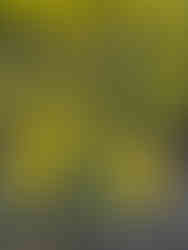Killarney, Ireland - Gateway to Amazement (Part 1 - Killarney National Park)
- debbiemanderson1
- May 6, 2024
- 7 min read
Subtitle: Enjoy your walk, but if you tire, hail a jarvey

You might have heard that Killarney in the southwest of Ireland in County Kerry is only a tourist town. With just 15,000 people, it has more hotel rooms than anywhere in Ireland other than the big city of Dublin and there are many restaurants and tourist shops and pubs. There is a marvellous cathedral that dominates the sky, and the streets are colorful, quaint and cute. And, like Banff, Canada, it has the good fortune of being born amidst natural beauty - rolling green hills, rugged mountains, and icy blue lakes.
But, rather than a 'tourist town', I prefer to see Killarney as the gateway to amazing experiences. Unfortunately, we only had two and a half days.
We arrived in Killarney by Irish Rail from Cork, a short, hour and a half ride, again rolling through Ireland's pastoral countryside (I love this country). We arrived at the Killarney train station and walked about five minutes to our hotel on the edge of the downtown area. With all of those choices of lodging in a small city, all are in quite close proximity. Killarney, itself, is adorably walkable, and there are all forms of transportation available if you want longer trips, which you will - drivers, taxis, tour operators, busses, and 'jarveys' and their 'jaunting cars' (keep reading).
As do most of the towns in Ireland, Killarney has an interesting history. Early settlement dates to 640 AD with strong religioius affiliation (maybe even paganism?). It's worth reading up. And, yes, tourism is a huge industry with about 1.5 million visiting a year (because, as I said, it's the gateway to amazement).
The most outstanding sight in Killarney townsite is St. Mary's Cathedral and greenspace. By ancient cathedral standards, St. Mary's is not that old, but it is magnificent. The great famine delayed construction, and it was not completed until 1907. It underwent a contentious renovation in 1973 when some of the original designs were altered significantly. The surrounding grounds are simple and bucolic.

And now for some adventuring. I soon found that I had no idea what this part of Ireland has to offer and I was, well, amazed, so much so that this blog is split into two. Part 1 will talk about Killarney National Park, and Part 2 will talk about a popular (and gorgeous) day trip.
Killarney sits right on the northeast edge of Killarney National Park and, if you choose, you can enjoy the park simply by walking out of the townsite. Killarney National Park was the first National Park in Ireland. The park is now over 102 square kilometres including the three lakes (Lough Leane, Muckross Lake or Middle Lake, and Upper Lake), woodlands and meadows, and a mountain range, the Purple Mountains (Ireland's highest peak at slightly over 3,400 feet sits in the MacGillycuddy's Reeks range just west of the park). The park is now a UNESCO Biosphere Reserve (and you know how much I love any type of site with 'UNESCO' attached). Here's a map showing Killarney and the National Park (the map is readily available in hotels and tourist information centres throughout Ireland; DiscoverIreland.ie).

Just feet from Killarney's downtown, across from St. Mary's Cathedral, is an entrance to the park for a pleasant stroll or bike ride or 'jaunting car' ride to the shores of Lough Leane. Slightly to the south west is Killarney House and the Knockreer Estate and the beautiful trails and paths to the fairy tale Ross Castle.
The current Killarney House (the first was built by the 4th Earl of Kenmare on a nearby hill overlooking Lough Leane) was once the stables of a larger residence that was later demolished. The stables were remodelled as a family residence in the early 1900's but sat empty for years before being restored in 2016 and is now a Killarney National Park Visitor Centre. It was closed when we attended. The restoration of the house made easy access to the National Park from Killarney and opens up to the Knockreer Estate (the former site of the first Killarney House), now the National Park Education centre. There are walking maps available of the Killarney House and gardens and the pastoral Knockreer Estate grounds, ranging from one to eight kilometres leading to the ancient Ross Castle.

Killarney House
Through the Cherry Lane and down the fairy-tale paths to Ross Castle, the views are iconic, especially when you catch a glimpse of a jarvey and a jaunting car topping a rise with Ross Castle in the background. This might be some of the most beautiful landscapes you've seen.
Ross Castle is old, dating to the late 15th century and sits on the edge of Lough Leane. Legend has it that the probable builder, O'Donoghue Mor, sleeps under the waters of the lake and every seven years, on the 1st of May, rises on his white horse. Of course, if you see him, you will have good fortune the rest of your life. It is in a beautiful setting, backed by mountains and surrounded by water, forest, and woodland. It is open for tours and there is a cafe on the grounds, as well as boat tours of the lake.

Leaving the Killarney House gate after your choice of a one-to-eight kilometre walk (we had to refurbish first with a lovely scone and coffee in town), you can simply turn right, and you are on your way to the Muckross Demesne. ('Demesne' historically means land attached to a manor' - yes, I had to look that one up.) The first part of the walk is along highway N71 with a well-developed path which soon veers off at a sign for Killarney National Park. This lengthy path now takes you through quite possibly one of the most pastoral walks you've been on, through natural woodland and green meadows with flowers, wildlife, and cows grazing contentedly. It is idyllic, stretching for almost six kilometres from the downtown to Muckross House. We can now say that we walked a small part of the famous Kerry Way, a 214 kilometre circular trail beginning and ending in Killarney.
The Muckross Demesne is one of the most popular places in Killarney National Park.
After just over four kilometres, you reach the ancient Muckross Abbey just over a kilometre before you reach Muckross House. The Abbey is said to date to the 1440's, built for Franciscan monks, but some believe it is much older. We chose to enjoy the postcard view from afar rather than explore the ruins. But I have it from a very good source (who has never met a cemetery or ancient church ruins that she doesn't like) that it is remarkably well-preserved, although it has been 'renovated' many times over the centuries. It is worth researching, from how the site was founded based on a 'singing rock' to the Abbey's turbulent history, damage, and reconstructions.

Just over a kilometre further up the path, you reach the 'piece de resistance', Muckross House, dating to 1843 and built by wealthy Welshman Arthur Herbert. It is quite simply stunning, a Victorian Mansion with some 65 rooms on an 11,000 acre estate on the shores of Muckross Lake. It changed owners several times over the years but became the basis for Killarney National Park when the land was handed over to the government in 1932. Queen Victoria stayed at the estate in 1861. Her visit was highly anticipated, and the Muckross Gardens were constructed for her visit. The gardens and lawns are spectacular. The gardens are comprised of several separate gardens including the Rock Garden, the Water Garden, and the Sunken Garden. The lawns extending to Muckross Lake are massive. Tours of the house are available, and the restored inside is said to be impressive. The gardens and lawns are free to enjoy.
Here are front, back, and side views of Muckross House:



Just a small sample of the magnificent Muckross Gardens.
There is much more to see at the Muckross Demesne, and we did not have enough time. One of the newest instalments that we did check out is the Walled Garden adjacent to the mansion. It contains craft rooms and workshops and a restaurant with very reasonably priced (and good) food. Just up the hill are three working farms, Muckross Traditional Farms, reminiscent of farming in the area in the 1930's. There is a cost to visit. A herd of pedigree Kerry cattle grazes in the meadows. A little search shows that they are a rare breed native to Ireland and one of the oldest breeds in Europe. They are a milking breed, smallish in size, and almost entirely black. (I am hoping that the picture I included above is of a Kerry cattle herd.) There are trails all around just begging to be hiked, including the entire perimeter of Muckross Lake.
So you could easily spend a full day at the Muckross Demesne as do the area locals. If (when?) I return, I'd explore the Muckross Abbey, tour the Muckross House, attend the visitor centre, spend more time enjoying the gardens and lawns and lakeside, check out those traditional farms, and do more hiking. That would actually take more than one day.
By now, I'm sure you've figured out that jarveys and jaunting cars are drivers and their horse carriages. Jaunting cars date to 1815 in Ireland and were a main form of transportation. We did not ride in one, but even though it seems quite 'touristy', I've read that it is a fun and possibly funny experience as the drivers have their own stories to tell. It also looks like a pleasant way to ride through this part of the National Park, and I certainly enjoyed the "clip-clop" during our hours of walking that day out to Ross Castle and to the Muckross Demesne.

In our one day in Killarney National Park, we covered a lot of ground by foot and developed a good feeling for what the park near the Killarney townsite is like; but the beauty simply whetted my appetite for more (just how many times have I used the words bucolic, pastoral and idyllic?): to explore Muckross Demesne further, to spend more time at the Killarney House and Knockreer Estates and Ross Castle, to take boat trips to some of the smaller islands including Innisfallen which is the site of the Innisfallen Abbey, to hitch a ride on a jaunting car (yes, I will), to hike more of the trails and more of the Kerry Way . . .
But this is only one small area of the Killarney National Park. Next time, I'd look into transportation for some more rugged mountain hiking and maybe explore the Gap of Dunloe that separates the Purple Mountains and the MacGillycuddy's Mountains.
Next time, I won't underestimate the opportunities. There is so much more to experience.
Our first day saw some of the wonders of Killarney National Park. But there are two highly popular and highly worthwhile all-day trips from Killarney that take you out into just a small part of the 1600 mile Wild Alantic Way - the Ring of Kerry and the Dingle Peninsula. We had time for just one - so please read 'Killarney, Ireland - Gateway to Amazement (Part 2 - The Dingle Peninsula); Subtitle: The Force May Be With You, but don't let the sheep eat the toilet paper'
































































Comments